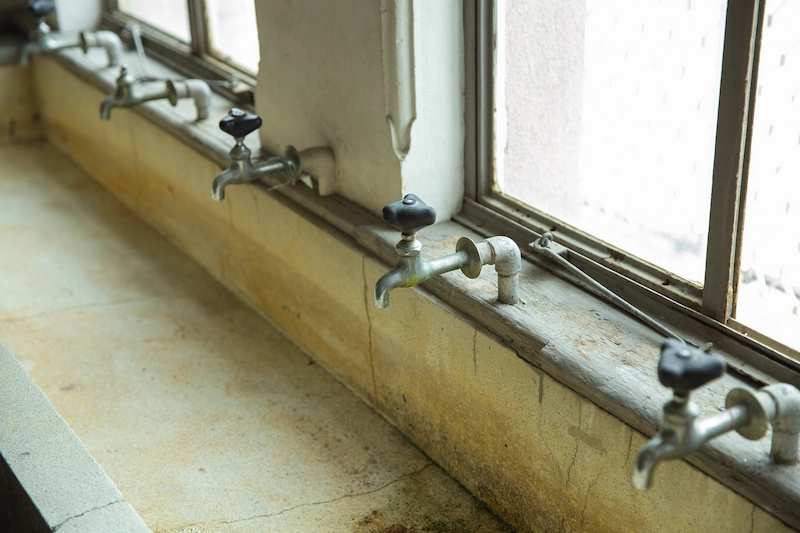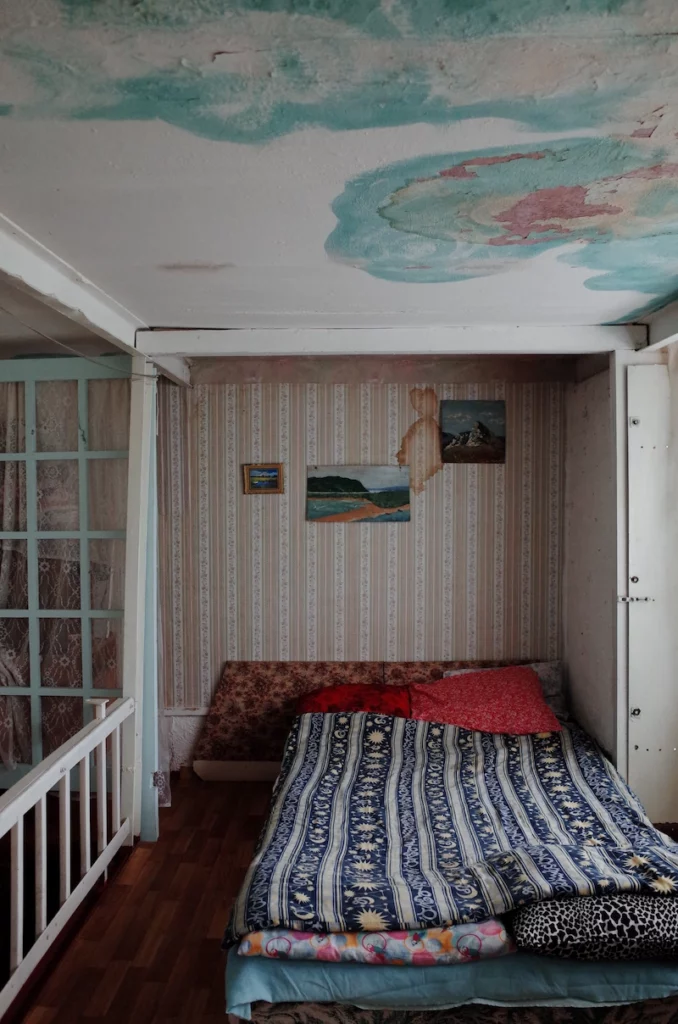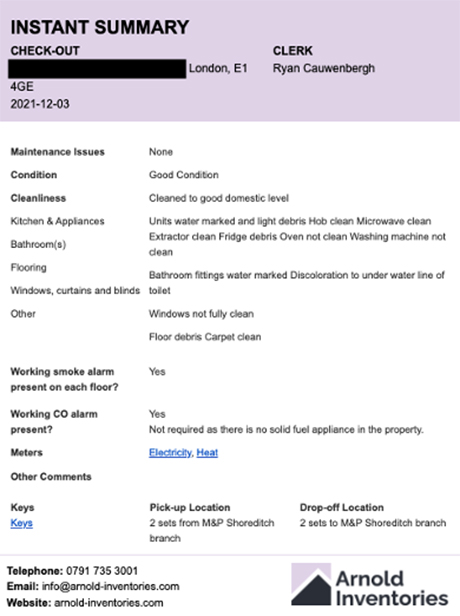What is Mould and Damp?
Damp in a property refers to excessive moisture, which can in turn cause mould to grow. Mould is a fungus that thrives in environments with moisture, humidity, and a food source. It is commonly found on surfaces such as walls, ceilings, and carpets.
Why is Black Mould Different?
Black mould, most commonly Stachybotrys chartarum, refers to types of mould that are dark green or black in appearance. It is one of the most dangerous types of mould, and is more commonly associated with health risks and structural damage to property.
Black mould in a rental property could cause health risks for tenants, and should be addressed and dealt with as quickly as possible. If tenants spot signs of mould forming they should inform their landlord / managing agent immediately
The Importance of Addressing Mould in Rental Properties
It is very important that mould issues are correctly and promptly dealt with by landlords, to ensure the safety of the building and the tenants living there. Tenants should take preventative steps to stop mould from forming and developing.
A mid term inspection can be very useful in assessing the condition of a property during a tenancy and can flag potential mould issues at an early stage. Book yours today.

How Can Mould Affect Your Health?
Moulds produce allergens which can lead to symptoms such as sneezing, nasal congestion, coughing/wheezing, red eyes and sometimes rashes. People who suffer from asthma are more sensitive to mould reactions, and are therefore more vulnerable, and extra care should be taken to prevent mould from developing and spreading.
Common Causes of Mould Growth
Poor Ventilation
Inadequate ventilation, particularly in areas such as a bathroom or kitchen, can cause condensation issues (when moisture in the air comes into contact with cold surfaces, for example window frames). Condensation can cause mould to form so it’s vital to ventilate the property adequately.
Water Leaks
Leaking roofs or plumbing in a property provides the ideal environment for mould to develop.
Structural Problems
Structural issues such as leaking pipes, missing or damaged roof tiles and blocked gutters can cause damp which can lead to the development of mould.
Inadequate Insulation
The right amount of insulation can play a huge role in keeping your home at the ideal temperature which will reduce the chances of mould forming.
Landlord Mould Responsibilities
When it comes to the question of ‘is mould a landlord’s responsibility’, the answer is typically yes! Let’s look into the specifics of what responsibilities you have as a landlord when it comes to damp and mould…
Providing a Safe and Habitable Living Environment for Tenants
The main responsibility of a landlord is to ensure the property they are renting out is safe and free from health hazards, which includes exposure to potentially harmful mould.
Preventing Damp in Rental Properties
As a landlord, preventing mould from forming is much better than trying to fix the issue afterwards. Some of the most effective methods include:
- Ensure the property has an effective damp proof course
- Improve the insulation in the property
- Keep gutters maintained and unblocked
- Ensure extractor fans are present and working in bathrooms
- Educate tenants on how to maximise ventilation in the property
What To Do When Mould is Spotted
If you notice mould in your property, or your tenant has informed you of a mould problem during their tenancy, you should take action as soon as possible.
Schedule an inspection to identify where the mould is, the source of moisture that is contributing to the mould growth, and the severity of the issue. You should keep tenants informed of the findings and next steps to protect their health, and arrange any repairs needed to the property.
If the problem persists, or you are unsure what you can do to help the situation, you may need to seek advice from a damp expert.
You should also keep records of inspections, communication with tenants, and any invoices, to show steps taken to respond to your tenant’s concerns and eliminate risks to their safety. These could be important in the case of a dispute, for legal and insurance purposes.
Read the guidance provided by Citizens Advice about how and when to take action on damp and mould in rental properties.

What Can Tenants Do to Prevent Mould Growing?
Tenants have a key role in the prevention of mould formation and should be aware of their responsibilities whilst living in the property. There are steps you should be taking to prevent damp and mould from forming, as part of your obligation to look after the property while you are living there. Some preventative measures you can take include:
- Opening windows and doors for ventilation
- Ensuring extractor fans are used in kitchens and bathrooms
- Drying clothes outside or using a tumble dryer where possible
- Leaving a gap between furniture and external walls
- Wiping condensation from window sills each morning
- Keeping the temperature as consistent as possible by having the heating turned on regularly
- Reporting any signs of mould formation immediately.
Avoid Disputes with an Inventory Check In Report
By having an unbiased property inventory check in report carried out before your tenants move in, you can ensure that the condition of the property is documented. This will include any signs of damp and mould, and provide evidence which can be referred back to in the case of a dispute occurring.
Book an inventory report with Arnold Inventories by getting in touch, and view our full range of property services to see how we can help you.
Frequently Asked Questions
What is the difference between damp and mould?
The term ‘damp’ simply refers to excess moisture, and can be caused by leaks, flooding, condensation, and rising damp from the ground. Mould, on the other hand, is a type of fungus that grows in damp conditions. So, despite being different issues, they are closely related as damp surfaces provide the perfect environment for mould spores to grow and spread.
Who is responsible for mould, landlord or tenant?
The landlord is responsible for responding to and fixing mould related issues in a rented property. However, should the tenant have been given clear instructions on how to prevent damp issues at the start of their tenancy, and if the tenant has failed to report any mould during their tenancy, there could be disputes over who is responsible.
This is why having an inventory check in report carried out by an expert is so important, to evidence the condition of the property and its surfaces prior to a tenant moving in. To find out more about our property services and how they could help you, reach out to Arnold Inventories.
How long does a landlord have to fix mould?
Once a tenant reports a mould problem, a landlord will have 14 days to respond. There is the possibility of a tenant contacting their local authority or even taking legal action if the mould isn’t dealt with promptly.
Can I end my tenancy early due to mould?
This will depend on the tenancy agreement and whether it includes a break clause, however there is no specific legislation that states that a tenancy can be ended early because of mould. It is within a tenants rights to contact their local authority to perform an inspection if the landlord doesn’t agree to do so, in which case the landlord could be forced to address the issue.
Can I refuse to pay rent if there is mould?
You are not able to withhold rent payments because of mould, and it could lead to eviction. Instead, you should contact your landlord to get the problem resolved, and seek help from your local council’s health department should your landlord refuse to insect and resolve the issue.




0 Comments
Leave A Comment